If you’ve seen jennets get pregnant multiple times already, you can probably easily spot the signs a donkey is pregnant. But if it’s your first time, you may miss some of the not-so-subtle signals.
The early signs of pregnancy in donkeys are typically less evident than the late signs. But even at that, you can tell a jennet is pregnant early enough if you know what to look for. Albeit less likely, you can also miss the late pregnancy signs in jennets. But if you are familiar with them, you won’t.
Below, we go over 13 signs a donkey is pregnant. Once you familiarize yourself with some of these signs, you can spot a pregnant donkey quickly and prepare accordingly.
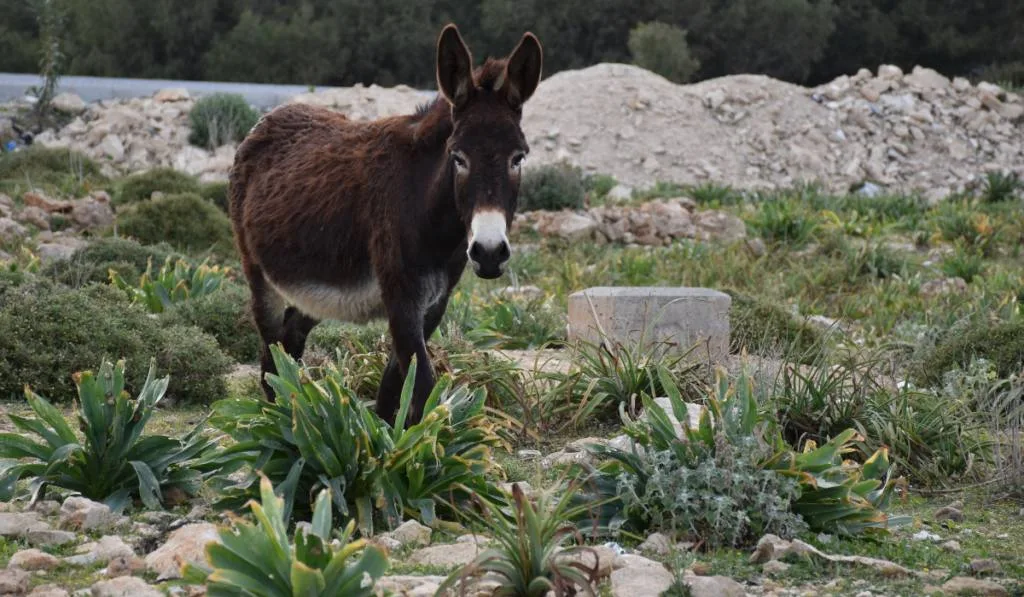
Table of Contents
Early Pregnancy Signs in Donkeys
The Donkey Does Not Enter a New Estrous Cycle
One of the earliest signs of pregnancy in donkeys is the absence of an estrous cycle. This holds true because a jennet will not enter a new estrous cycle when it becomes pregnant.
If you’ve been studying and following your jennet’s estrus pattern, you may know when it goes into heat. So, when it stops going into heat, it is most likely pregnant.
While the estrous cycle is one of the best ways to tell if a donkey is pregnant or not, there is a seasonality to estrous cycles in donkeys. So, a donkey may sometimes show no estrous signs even when it is not pregnant.
If trying to detect pregnancy using the absence of the estrous cycle, being familiar with the donkeys’ typical estrous cycles helps. It increases the probability that you are correct.
Weight Gain
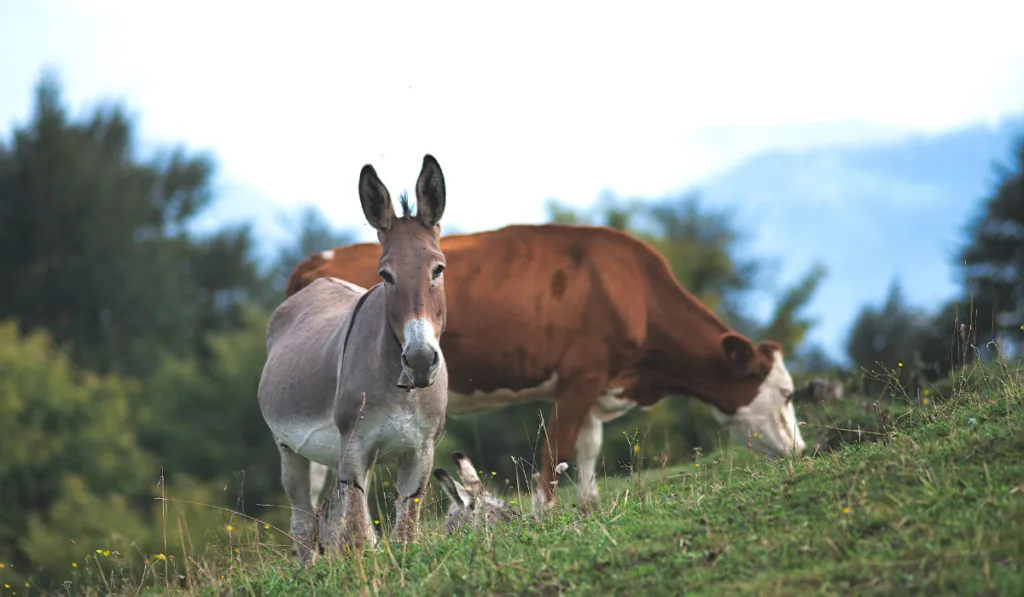
As with most mammals, donkeys experience significant weight gain when they become pregnant. However, weight gain is not a definitive sign of pregnancy in donkeys.
If you notice weight gain in your jennet, it may be because of increased food consumption, not pregnancy. But then, you might be able to tell the difference between weight gain caused by food and weight gain caused by pregnancy.
When a jennet is pregnant, the weight gained concentrates in the lower abdominal area. Also, the bulge of a donkey pregnancy is uneven; one side looks bigger than the other.
In the early stages of the pregnancy, the difference between food weight gain and pregnancy weight gain may not be discernible. But as time passes, it will become more evident.
Late Pregnancy Signs in Donkeys
Swollen Vulva
Vulva swelling typically shows up around a few hours to a few days before a pregnant donkey goes into foaling. The vulva swells and relaxes, expanding beyond its usual size in preparation for the foal. Of course, the vulvar expansion is to allow the easy exit of the foal from its mother’s womb.
Restlessness
A few weeks before foaling, a pregnant mare will become restless. Its restlessness could come as a result of the discomfort it feels. At this time, the mare would become uneasy and irritable. You may find it pacing around, looking from side to side. You may also see the mare rolling in its stall, standing and laying down, swinging its tail, or kicking its own abdomen.
The abdominal kicks, tail swings, and general uneasiness may also be signs of colic. However, if your mare still feeds and excretes often, it is pregnancy, not colic.
Calmness/Inactivity
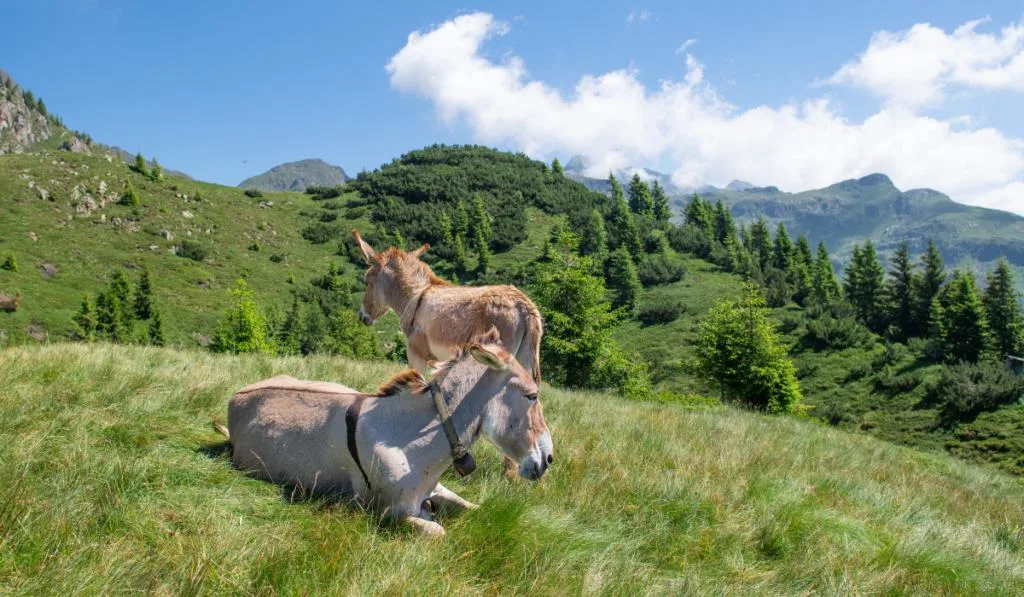
While your pregnant jennet can become restless when pregnant, it may also become calm and less active. You may find the donkey searching for spots to spend time alone. In many cases, this inactivity and calmness are distinct from their usual stoicism.
Isolation
A pregnant jennet may separate itself from the others. As we mentioned before, it may seek private, serene places where it will stay all by itself.
Unfriendliness
In the 48 hours before foaling, your pregnant jennet may become unfriendly. Its unfriendliness might just be an extension of the restlessness it was already feeling.
Appetite Changes
As the pregnancy progresses, a jennet will most likely lose its appetite. This reduced desire for food may partly be due to estrogen hormones.
Estrogen levels progressively increase during mammalian pregnancy, reaching their peak towards the end of the pregnancy. But then, estrogen may suppress food intake. So, if your mare is not eating as much as it typically does, it may be pregnant.
Besides hormonal influence, a pregnant donkey’s lack of appetite may come from limited abdominal space. The foal within the mare’s womb will occupy a significant portion of the abdomen, leaving less area for the mother to fill with food.
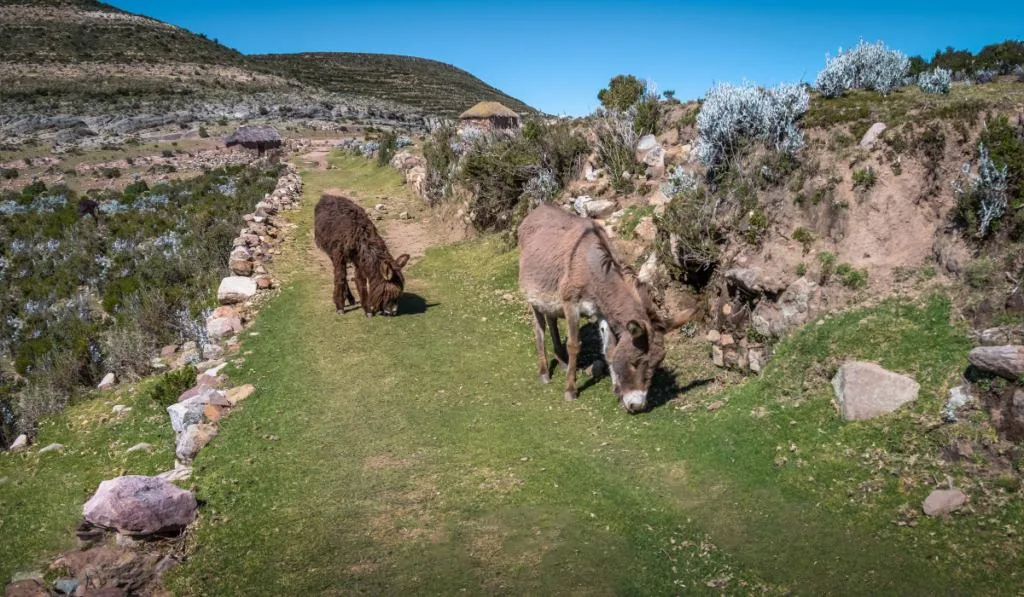
Swollen Udder and Teats
After foaling, a jennet will keep lactating for a while before it eventually stops. When it does stop, the udder will become less prominent and almost indistinguishable from the abdomen.
As the pregnancy of a donkey enters its final stage, the donkey starts producing milk again. As it begins to produce milk, its udder and teat become distended and more visible. This typically occurs around 3 to 4 weeks before foaling.
Wax Secretion
About 12 to 36 hours before foaling, you may find some wax secretions around the teats of a pregnant jennet. These waxy secretions may also show up 1 to 2 weeks before foaling.
The wax secretions are colostrum droplets, and when you notice them, you can be sure that foaling is only days away. Going by this last statement, you could say the wax secretions are more foaling signs than pregnancy signs.
Some pregnant donkeys do not show these waxy secretions. So, even if you do not see them, your donkey may be pregnant.
Milk Secretion
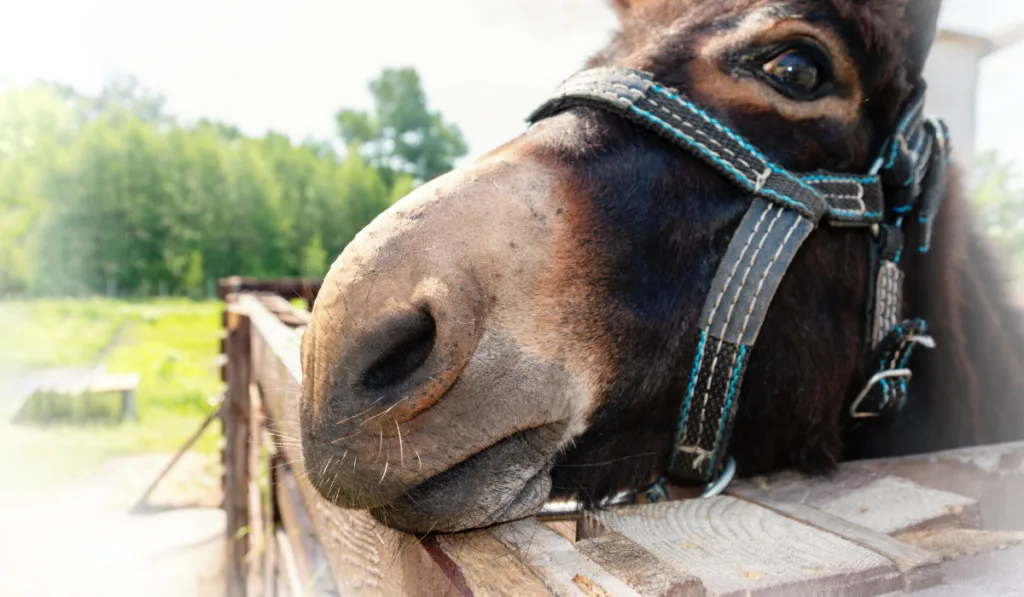
Besides the waxy secretion (colostrum), you may also find milky secretions around the teats of a pregnant jennet. The milky secretions also signify that foaling is not far away.
Not all pregnant donkeys show milky secretions before foaling. But if your jennet is going to, the milky secretions will come about 1-2 days before the waxy secretions.
Early milk secretion may harm the foal’s immunity. So, if you believe that milk is running from your pregnant jenny ahead of time, get a vet to examine it.
Foal Movement
In the few weeks before foaling, you will notice foal movement if you pay close attention to the pregnant jennet’s flanks.
You may not notice foal movement in the early gestation months of a donkey because, at this point, the foal is not big enough.
But in the final months, development is complete or almost complete, so the foal is big enough, and you can see it moving.
Increased Flexibility Around the Pelvic Region

In about 3 to 4 weeks before foaling, the pelvic region of a pregnant donkey relaxes and becomes more flexible. This pelvic relaxation and increased flexibility ensure that the foal can easily exit the birth canal.
You may feel the pelvic muscles with your hands to confirm the relaxation. Relaxed muscles will feel less firm than they typically are.
As the pelvic muscles of a pregnant jennet relax, you may also find that the bone around the base of the tail becomes freer than it usually is.
Apart from that, you may notice a recess on both sides of the base of the tail. Of course, some jennets may show no such indentation.
Resources
- https://pubmed.ncbi.nlm.nih.gov/22281161/
- https://animals.mom.com/how-to-care-for-pregnant-donkeys-12355743.html
- https://www.animalwised.com/how-to-know-if-a-donkey-is-pregnant-1425.html
- https://farmandanimals.com/how-to-tell-if-a-donkey-is-pregnant/
- https://www.thedonkeysanctuary.org.uk/what-we-do/knowledge-and-advice/for-owners/donkey-foaling
- https://www.thedonkeysanctuary.org.uk/sites/uk/files/2017-08/foaling-preparation-birth-and-beyond.pdf
